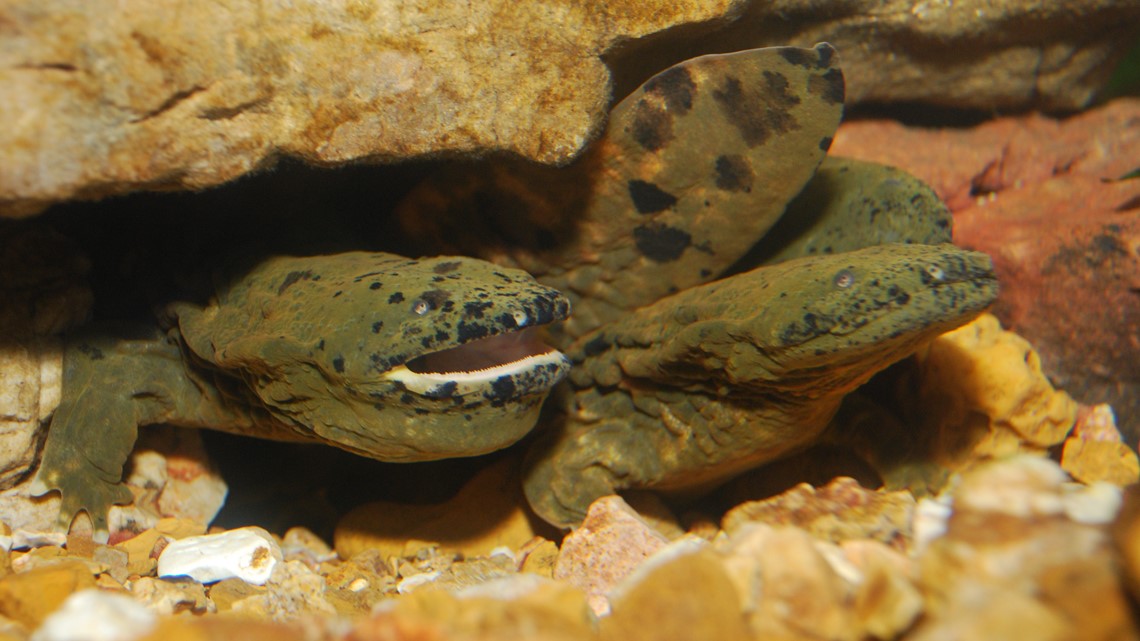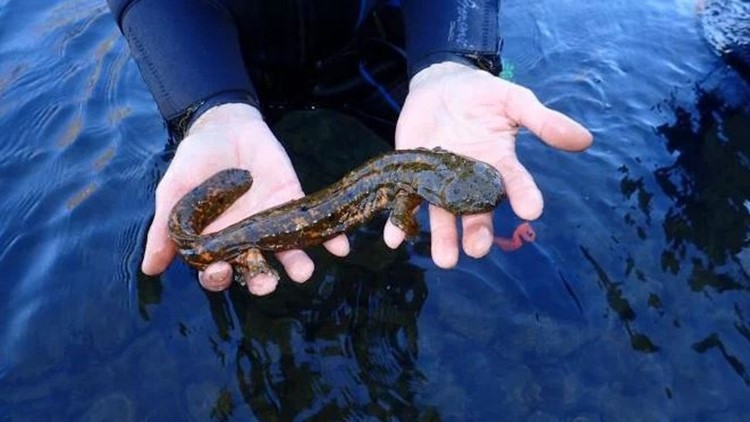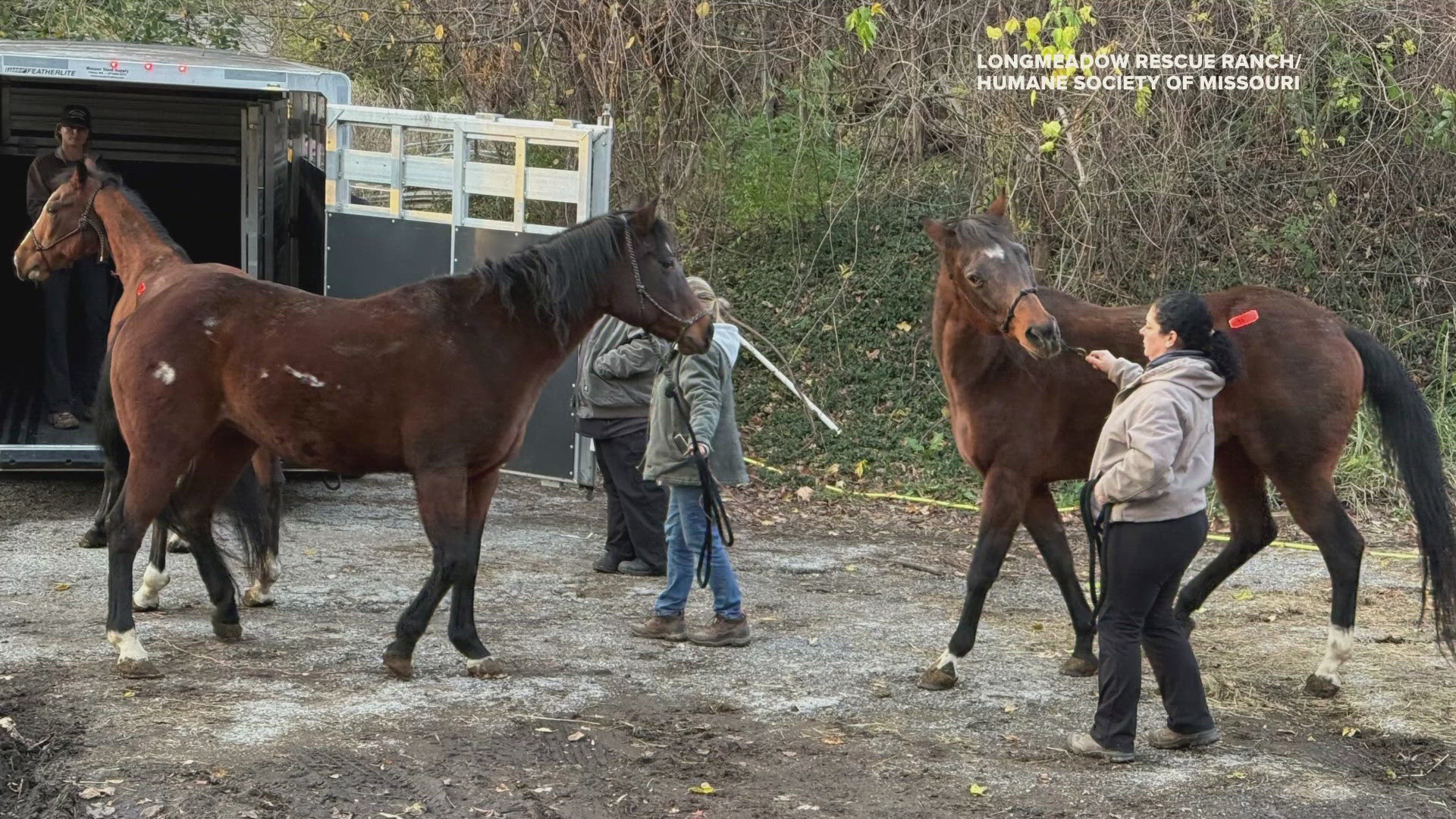OZARK, Mo. — An endangered Ozark hellbender raised by the Saint Louis Zoo has successfully reproduced within the Current River.
This is a significant milestone in the recovery efforts of the species, according to the Missouri Department of Conservation.
At one time, rivers in southern Missouri and northern Arkansas were home to 27,000 Ozark hellbenders. Now, fewer than 1,000 exist in the world, which led to the hellbender being added to the federal endangered species list in October 2011.
“We are very excited to announce this news,” Jeff Briggler, Missouri herpetologist, said in a news release. “This is the first documented event of a zoo-raised animal fathering a clutch of eggs in the wild.”
The male Ozark hellbender was collected from a natural nest of eggs in the Current River in 2013 by MDC and taken to the Saint Louis Zoo, where the eggs were hatched.


MDC said the zoo has nearly 20 years of experience caring for hellbenders.
“Caring for hellbenders through their lives, from tiny eggs to sub-adults, takes a tremendous amount of work, but it’s absolutely worth it knowing we’re aiding in the conservation of wild animals and wild places," said Justin Elden, with the Saint Louis Zoo.
The hellbender was released into the Current River in 2019. When he was released, he weighed 5.6 ounces and was 11.8 inches long. When his nest was found in 2022, he weighed 8.9 ounces and was 14.4 inches long.
“It was exciting to not only see the growth and healthy appearance of this father after living three years in the wild but to also see such a healthy animal successfully reproduce,” Briggler said.
Elden said the zoo was proud to partner with MDC on saving the species. He said finding a zoo-raised Ozark hellbender reproducing in the wild is one of the “greatest accomplishments" of the zoo's WildCare Institute's conservation efforts.
Background
Hellbenders are large aquatic salamanders. Missouri is the only state that has both subspecies of North American hellbenders – Ozark hellbender and eastern hellbender.
Both are listed as endangered species by the state and federal governments, according to MDC.
The primary threats these animals face are habitat alteration and degradation, over-collecting, disease, predation and degraded water quality. Hellbenders typically live about 30 years, MDC said.
The adult hellbender is one of the largest species of salamanders in North America. The closest relative of the hellbender is the giant salamanders of China and Japan, which can reach 5 feet or more, MDC said.



